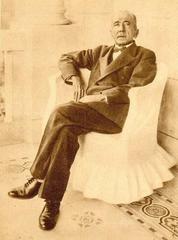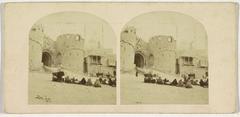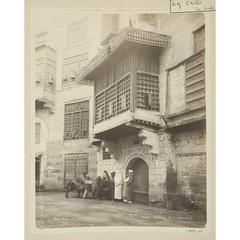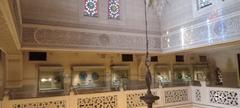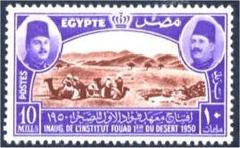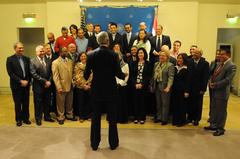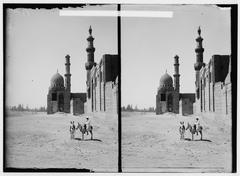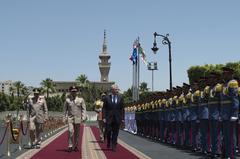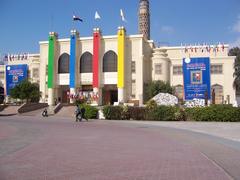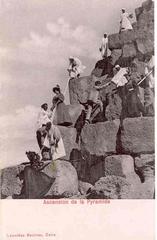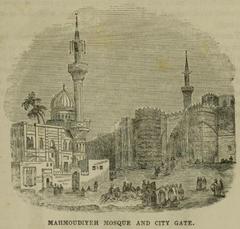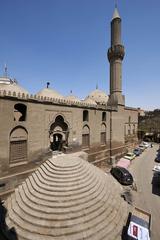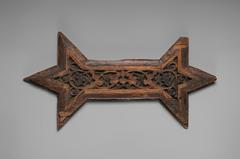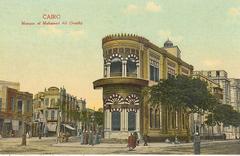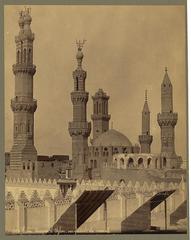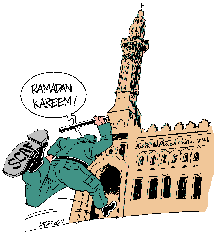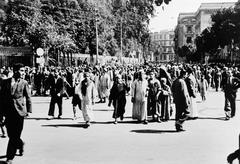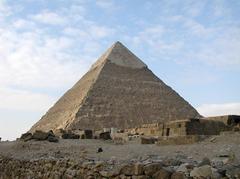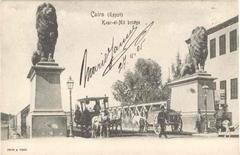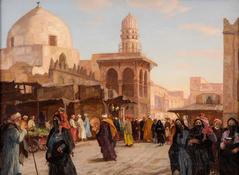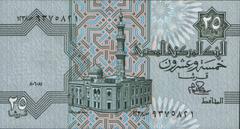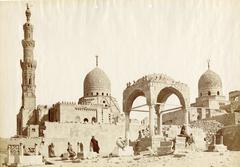Visiting Guide to the National Museum of Egyptian Civilization in Cairo, Egypt
Date: 17/07/2024
Introduction
The National Museum of Egyptian Civilization (NMEC) in Cairo, Egypt, is a monumental institution dedicated to preserving and showcasing the rich tapestry of Egypt’s historical and cultural heritage. Inaugurated on April 3, 2021, the museum’s opening was marked by the grand Pharaohs’ Golden Parade, which saw 22 royal mummies transferred from the Egyptian Museum in Tahrir Square to their new home at NMEC (Al-Monitor). Located in the ancient city of Fustat, the NMEC stands as a testament to Egypt’s enduring legacy and its continuous efforts to educate and engage both local and international audiences through its extensive collections, state-of-the-art technology, and diverse educational programs.
The museum’s architectural design, a collaboration between Egyptian and international architects, covers an impressive 135,000 square meters, with 23,235 square meters dedicated to exhibitions (UNESCO). The NMEC is unique in presenting a comprehensive view of Egyptian civilization from prehistoric times to the present day, with over 50,000 artifacts organized into thematic galleries that cover all aspects of Egyptian culture. Highlights include the Royal Mummies Hall, which provides an immersive experience into ancient Egyptian burial practices, and various thematic galleries that explore the dawn of civilization, the Nile, writing, state and society, material culture, and beliefs and thinking (NMEC Official Website).
This guide aims to provide a detailed overview of the NMEC, including its history, architectural significance, key exhibits, educational and cultural programs, technological innovations, visitor information, and its broader impact on the local community and global heritage. Whether you are a history enthusiast, a student, or a casual visitor, this comprehensive guide will help you make the most of your visit to the NMEC.
Table of Contents
- Introduction
- Origins and Development
- Architectural Design
- Collections and Exhibits
- Educational and Cultural Significance
- Technological Innovations
- Visitor Information
- International Collaborations
- Economic and Social Impact
- Future Prospects
- FAQ
- Conclusion
- Call to Action
Origins and Development
The idea for NMEC was first conceived in the 1980s, but it wasn’t until 2002 that the project gained significant momentum. The museum was officially inaugurated on April 3, 2021, with a grand ceremony that included the historic Pharaohs’ Golden Parade, where 22 royal mummies were transferred from the Egyptian Museum in Tahrir Square to their new home at NMEC (Al-Monitor).
Architectural Design
The NMEC is located in the ancient city of Fustat, the first capital of Islamic Egypt, which adds another layer of historical significance to the site. The museum’s design was a collaborative effort between Egyptian and international architects, including the renowned Egyptian architect El Ghazzali Kosseiba and the Japanese architect Arata Isozaki. The building covers an area of approximately 135,000 square meters, with 23,235 square meters dedicated to exhibition space (UNESCO).
Collections and Exhibits
The NMEC is unique in that it is the first museum in the Arab world to present a comprehensive view of Egyptian civilization from prehistoric times to the present day. The museum’s collection includes over 50,000 artifacts, organized into thematic galleries that cover various aspects of Egyptian culture, including the dawn of civilization, the Nile, writing, state and society, material culture, beliefs and thinking, and the gallery of royal mummies (NMEC Official Website).
The Royal Mummies Hall
One of the most significant attractions at NMEC is the Royal Mummies Hall, which houses the mummies of some of Egypt’s most famous pharaohs, including Ramses II, Seti I, and Queen Hatshepsut. The hall is designed to resemble the Valley of the Kings, providing visitors with an immersive experience that highlights the grandeur and mystery of ancient Egyptian burial practices (BBC).
Educational and Cultural Significance
The NMEC is not just a repository of artifacts; it is also a center for education and cultural exchange. The museum offers a variety of educational programs, workshops, and lectures aimed at both local and international audiences. These programs are designed to promote a deeper understanding of Egyptian history and culture, fostering a sense of pride and identity among Egyptians and enhancing global appreciation of Egypt’s contributions to human civilization (Egyptian Streets).
Technological Innovations
The NMEC employs state-of-the-art technology to enhance the visitor experience. Interactive displays, virtual reality experiences, and multimedia presentations are integrated throughout the museum, providing visitors with engaging and informative ways to explore the exhibits. The museum also features a digital database that allows researchers and the general public to access detailed information about the artifacts and their historical contexts (Ahram Online).
Visitor Information
Tickets and Visiting Hours
The museum is open daily from 9 AM to 5 PM. Ticket prices are EGP 200 for adults, EGP 100 for students, and free for children under six years old. Tickets can be purchased at the museum or online through the NMEC Official Website.
Travel Tips
The NMEC is accessible by car, taxi, and public transportation. It is advisable to check the local traffic conditions and plan your visit accordingly.
Nearby Attractions
The museum is located near several other historical sites, including the Coptic Museum, the Hanging Church, and the Ben Ezra Synagogue, making it easy to explore multiple attractions in one trip.
Accessibility
The NMEC is equipped with ramps, elevators, and accessible restrooms to accommodate visitors with disabilities.
International Collaborations
The NMEC has established partnerships with several international institutions to support its mission of preserving and promoting Egyptian heritage. These collaborations include joint research projects, artifact loans, and exchange programs with museums and universities around the world. Notable partners include the Louvre Museum in Paris, the British Museum in London, and the Metropolitan Museum of Art in New York (UNESCO).
Economic and Social Impact
The establishment of NMEC has had a significant economic and social impact on the local community and the broader Egyptian society. The museum has created numerous job opportunities in areas such as archaeology, conservation, education, and tourism. Additionally, the influx of tourists drawn to the museum has stimulated local businesses and contributed to the economic development of the Fustat area (Egypt Today).
Future Prospects
Looking ahead, the NMEC aims to continue expanding its collections and enhancing its educational and cultural programs. Plans are underway to develop new exhibitions and interactive experiences that will further enrich the visitor experience. The museum also intends to strengthen its international partnerships and engage in more collaborative projects that will advance the field of Egyptology and promote global cultural heritage (NMEC Official Website).
FAQ
- What are the NMEC visiting hours? The museum is open daily from 9 AM to 5 PM.
- How much are NMEC tickets? Ticket prices are EGP 200 for adults, EGP 100 for students, and free for children under six years old.
- Is NMEC accessible to visitors with disabilities? Yes, the museum is equipped with ramps, elevators, and accessible restrooms.
- What are some nearby attractions to NMEC? Nearby attractions include the Coptic Museum, the Hanging Church, and the Ben Ezra Synagogue.
Conclusion
The National Museum of Egyptian Civilization stands as a testament to Egypt’s enduring legacy and its ongoing commitment to preserving and celebrating its rich cultural heritage. Through its comprehensive exhibits, educational initiatives, and technological innovations, the NMEC offers visitors a unique and immersive journey through the millennia of Egyptian civilization. Plan your visit today and explore the wonders of Egypt’s past and present.
Call to Action
For more information, to purchase tickets, or to stay updated on upcoming events and exhibitions, visit the NMEC Official Website. Follow us on social media and download our mobile app for the latest updates and exclusive content.
References
- Al-Monitor, 2021, Egypt holds grand parade to transport mummies to new museum
- UNESCO, 2021, News on NMEC
- NMEC Official Website, Homepage
- Ahram Online, 2021, Pharaohs’ Golden Parade
- Egypt Today, 2021, National Museum of Egyptian Civilization opens its doors to public
